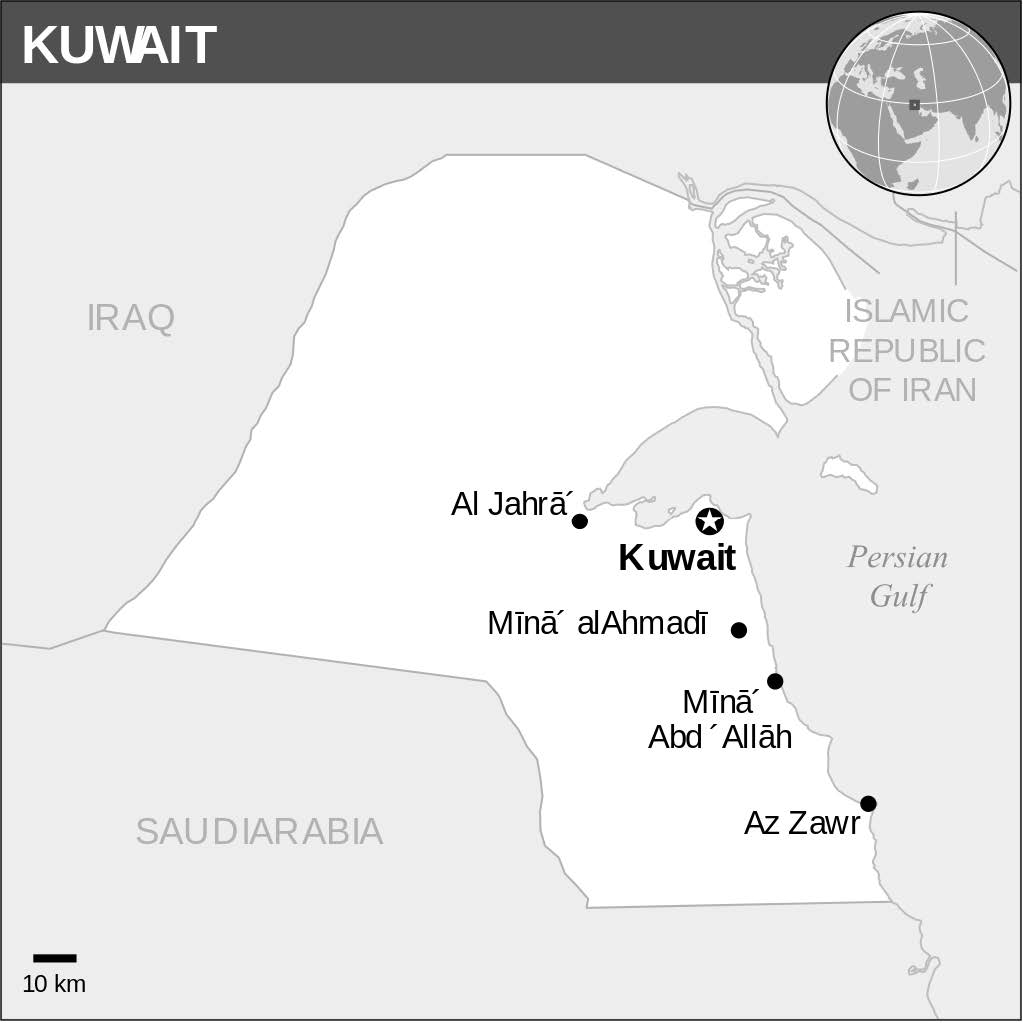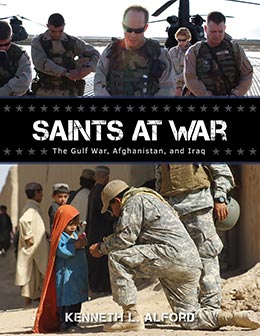Overview
Kenneth L. Alford, “The Gulf War: Overview,” in Saints at War: The Gulf War, Afghanistan, and Iraq (Provo, UT: Religious Studies Center, Brigham Young University; Salt Lake City: Deseret Book), 7.
 National flag of Kuwait
National flag of Kuwait
 Map of Kuwait
Map of Kuwait
In August 1990, Iraqi dictator Saddam Hussein invaded the tiny, neighboring, oil-rich country of Kuwait. In response, American president George H. W. Bush announced, “This will not stand, this aggression against Kuwait.”[1] He quickly seized Iraqi assets in the United States, coordinated with Turkey and Syria to close Iraqi oil pipelines, and worked with the Soviet Union to put an arms embargo in place. President Bush sought and obtained approval from the American Congress and the United Nations to forcibly eject Iraq from Kuwait as he organized and orchestrated the largest coalition of countries and their armed forces since the Second World War. Before the conflict ended, over thirty nations sent manpower and arms to force Iraq from Kuwait—although the heavy preponderance came from the United States. (See table 1.) It was also the first major American military conflict in which the All-Volunteer military was put to the test.
The Gulf War (1990–91) was two consecutive military operations. The first, Operation Desert Shield, began August 7, 1990, and ended January 17, 1991.[2] During Desert Shield, U.S. and coalition forces gathered in Saudi Arabia to protect that desert kingdom from Iraqi aggression and prepare for the initiation of offensive operations against Iraq. Operation Desert Storm (January 17, 1991, to February 28, 1991) was the combat phase of the war—a punishing coalition air campaign that heavily bombed Baghdad, Iraq’s capital city, and Iraqi military units. Iraq’s infrastructure was shattered during the bombing. The destruction in Iraq was staggering—“electric power stations (92 percent of installed capacity destroyed), refineries (80 percent of production capacity), petrochemical complexes, telecommunications centers (including 135 telephone networks), bridges (more than 100), roads, highways, railroads, hundreds of locomotives and boxcars full of goods, radio and television broadcasting stations, cement plants, and factories producing aluminum, textiles, electric cables, and medical supplies.”[3] The bombing paved the way for a massive attack with ground troops. Coalition forces were so successful that Iraq retreated from Kuwait after just 100 hours of combat. President Bush declared Kuwait had been liberated and ordered an end to the fighting. (See the Gulf War timeline for additional details.)
It was a rapid victory. As the New York Times editorialized shortly after the conclusion of hostilities, “The skill and coordination of the air war and then of the assaulting armies were as stunning as the speedy outcome. . . . The world that overestimated Saddam Hussein also underestimated George Bush. . . . His choices at treacherous junctures proved as successful as they were bold.”[4]
Coalition Members Troops Deployed | |||||
United States | |||||
Saudi Arabia | United Kingdom | ||||
Egypt | France | Syria | Morocco | Kuwait | |
Oman | Pakistan | Canada | United Arab Emirates | Qatar | |
Bangladesh | Italy | Australia | Netherlands | Niger | |
Sweden | Argentina | Senegal | Spain | Bahrain | |
Belgium | Poland | South Korea | Norway | Czechoslovakia | |
Greece | Denmark | New Zealand | Hungary | ||
Table 1. The Gulf War coalition.
Notes
[1] “This Aggression Will Not Stand,” New York Times, March 1, 1991, A26.
[2] “The Operation Desert Shield/
[3] “The View from France: America’s Unyielding Policy toward Iraq,” Foreign Affairs 74, no. 1 (January/
[4] “This Aggression Will Not Stand,” A26.
